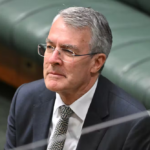Can the National Resilience Taskforce help protect Australia?

Established late last year, the Department of Home Affairs has initiated changes in both governance arrangements and thinking about national security in an all-hazards context.
The changes continue apace. Last month the Minister for Law Enforcement and Cyber Security, Angus Taylor, announced that Home Affairs will host a new National Resilience Taskforce focused on natural disasters, to be led by the former Director-General of Emergency Management Australia, Mark Crosweller.
The significance of disaster risk reduction, and of generating agile approaches to the effects of natural hazards—on communities, the essential services they rely on, and our economy generally—are beyond dispute.
We need only look back to the 2016–17 cyclone season to see the effects of Tropical Cyclone Debbie. Based on Swiss RE Australia assessments, Debbie was the second most expensive cyclone in Australia’s history, and the 12th most expensive in the world that year. Insurance payouts topped A$1.69 billion.
The costs of natural disasters to Australian communities and the economy over several years has been significant. The total annual cost of natural disasters in Australia is projected to increase from A$9 billion to $33 billion by 2050.
Owing to the regularity and size of losses, members of the finance community created the Australian Business Roundtable for Disaster Resilience and Safer Communities (ABR). That collaboration of significant Australian businesses—Munich Re, Optus, Westpac, IAG and Investa, as well as the Australian Red Cross—promotes the coordination of disaster mitigation across the private and public sectors.
ABR recently presented an analysis by Deloitte Access Economics on nine recent disaster reviews that found that of the 124 recommendations made in those reviews to improve resilience, just 13 have been implemented. Twenty-six are in progress but have no clearly defined timeframe for completion. Some it is suggested haven’t been actioned at all.
National progress to develop resilience has been slow, fragmented and reactive. Australia needs a more sustainable, coordinated, comprehensive national approach. We’d note here that insurance plays a critical role in improving preparedness before a disaster strikes, as well as in helping people recover after.
Minister Taylor hasn’t yet fully set out the National Resilience Taskforce’s terms of reference. But he’s stated that the taskforce has a major goal of reducing the impacts of natural disasters on the Australian community.
The first step, as outlined by the Minister, is the development of a national disaster mitigation framework. That’s critical. Building a prepared society must involve investing more in mitigation. A recent study from the US National Institute of Building Sciences found, for example, that every dollar invested in mitigation saves six dollars in recovery costs later.
A second step is the establishment of a national disaster risk information capability to improve the public’s understanding of disaster preparation, enhance community self-protection measures, and improve decision-making in the private and public sectors.
These are important activities. But they don’t explicitly target better multi-sector resilience as a national goal. The goal outlined by Minister Taylor must also be considered against a backdrop of earlier policy considerations, practices and commentary in similar areas.
The idea of national resilience–based policy and legislative coordination has been ‘on the books’ for some time. In December 2009, the Council of Australian Governments (COAG) agreed to adopt a whole-of-nation resilience-based approach to disaster management, which recognised that a national, coordinated and cooperative effort was needed to enhance Australia’s capacity to prepare for, withstand and recover from disasters.
The National Emergency Management Committee subsequently developed the National Strategy for Disaster Resilience, which COAG adopted in February 2011.The new taskforce should ensure that it takes the lead in updating that seven-year-old strategy—or at least has a major influence on the final result.
An updated Resilience Strategy, aligned with the disaster mitigation framework, should also detail a national approach to continuity and recovery planning for essential infrastructure systems.
It’s not only natural hazards that disrupt communities and the public and private sectors. Our national infrastructure is ageing, and not always gracefully. It’s being placed under greater stress from users trying to extract more in key sectors like power, transport and water supplies. The nation’s infrastructure faces new hazards, both man-made and naturally occurring.
We need to mitigate cascading effects on critical infrastructure. This issue will need to be considered by the taskforce, working closely with the Critical Infrastructure Centre in the Department of Home Affairs.
Establishing a national disaster risk information capability to aid public- and private-sector planners and decision-makers makes sense. But a key challenge will be to determine what information about disaster mitigation efforts is relevant and needed at each level—national, state and territory, and local—in both the public and private sectors.
Finally, the taskforce will also need to ensure that the many stakeholders share enough common disaster management terminology to make possible the joint efforts that will be required.
The currently stated deliverables of the National Resilience Taskforce are challenging. The taskforce’s potential to deliver useful results shouldn’t be limited by an overly constrained scope of review. Hopefully, its final terms of reference will allow the taskforce to adopt an ambitious work program around national disaster resilience, especially mitigation measures.
This post was written by Paul Barnes, the head of the risk and resilience program at ASPI and Anthony Bergin, a senior analyst at ASPI and a senior research fellow at the ANU’s National Security College. The article was published by the Strategist.
Dr Paul Barnes is a Research Fellow specialising in urbanisation and disaster resilience in the Institute of Global Development at the University of New South Wales. He previously established the Risk & Resilience Program at the Australian Strategic Policy Institute.
















Alan Stevenson
May 19, 2018 at 10:06 am
There have been many instances recently where people have suffered as a result of a disaster and then returned to continue as before even when it has been obvious that such a disaster is likely to reoccur. Maybe a part of the help offered should be based on a change of attitude – ie home moved from flood plain or fire-prone region. Many people are loath to do this due to inherent conservatism but disasters are on the increase due to climate change and we should be more careful about where we spend the relief.